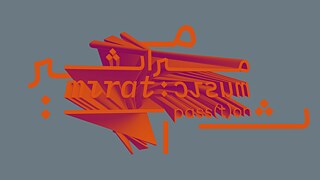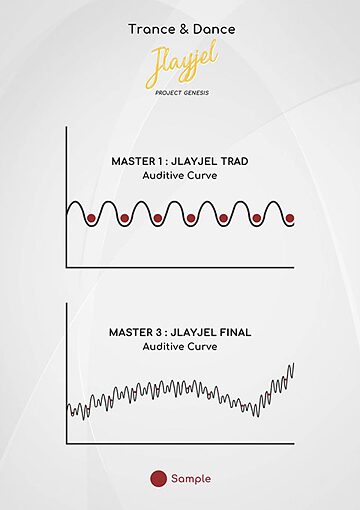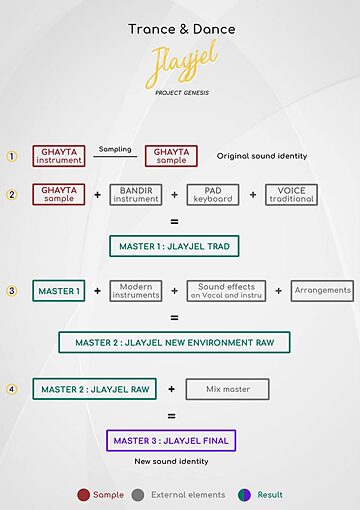Trance Music
Trance & Dance "Jlayjel"
Can the musical heritage adapt in the new environment and confront modernity? “Jlayjel,” a song that dates before the 1900's from the Nail region in the highlands of Algeria, meets unpredictable musical atmospheres and new cultures. Amel Zen invites you to discover the track to answer the question.
A daze, a social, psychological, historical and identity related dimension. The Trance.
A musical genre that is very present in North African and Maghreb music. In this essay, we will discuss the “Naili” musical heritage, found in the Algerian highlands (Djelfa, Bousaada, M'sila and Laghouat)
Trance music is characterized by repetitive melodic phrases and can be an ascending and descending musical form. It’s a musical genre in itself but can also include elements from other musical styles.
Concept:
The concept consists of developing an artwork based on a sample from the Naïli music archive and have it evolve and travel to meet new atypical, unpredictable musical atmospheres and new cultures. The sample will also confront modernity, technology and the electronic world. Our purpose is to take it out of its usual environment into a new one, we will then observe its evolution and reaction to external sound elements. Those elements will intervene freely and unconditionally.Problematics:
At the end of the process, will our musical heritage adapt, or get lost in the new environment it has been set in?Development: Project Genesis
1. Musical heritage piece presentationThis piece (Two musical measures of El Ghayta air instrument, often used in Algerian traditional music, specifically in Naili music) is extracted from an orally transmitted old popular Naili song called “Jlayjel,” which is a patrimony from Ouled Nail region in the highlands of Algeria.
According to locals, this song dates back well before the 1900's. It was recorded in 1990 by Cheikh Tamer. It talks about the beauty of the Naili Woman and love towards her. A song that is played often during celebrations and festivities.
2. Process
The first step was to create a sample of the instrument (el-Ghayta) to fit it into a metronome tempo (107 Bpm), and tune it according to the voice that would be added with a 6/8 time signature rhythm.[1]
The second step was to place the sample in a cyclical way through the whole track. Then we placed an ethnic Instrument, Bendir, with a clave complementary to the main rhythm in order to add consistency to the sample. In addition we used a synthesizer Pad background to add a first harmonical layer, played on the whole track in one single fundamental note. Finally, we added vocals in a traditional interpretation, with respect to the flow, style, and mode of the region.
At the end of this first production, we ended up with a first master which we called “Master 1 Jlayjel Traditional”
In the third step, we took the master 1 track, and added new external elements upon it: Battery and Bass through almost the whole track except for the beginning; verses and choruses to build the structure, clean and electric guitar chords, the themes which make the sample itself, and solos (Electric Guitar, and Keyboard.) Then we added sound effects on the instrumental and vocal elements in a progressive manner without messing with the beginning, which conforms to the traditional track, in order to better see the track’s evolution in the new environment.
We finalised the arrangement and added a bridge at the end of the track before the last chorus, knowing that this musical style does not include bridges in its structure. We gave the track’s curve a new aspect, defining Trance and its cyclical nature, while guaranteeing a non-redundant aspect. At this point, we recorded a new vocal element and added it and noticed that the voice’s interpretation changed with the new track. All of this gave us the second master: “Master 2 : Jlayjel New environment RAW.''
[1] Bare in mind that when it comes to musical heritage, instruments are not tuned to the A440 HZ (LA) tuning fork. They are played freely, in a cyclical way, without any metronome.
Conclusion
Finally, we noticed on the RAW track that the sample blends into the new environment. We can feel it, but we can not hear it every time. After the mix mastering phase, we ended up with a final master called “Master 3 : Jlayjel Final.” We noticed that the sample adapted perfectly with the new environment and new arrangement. It is a personal point of view, and it might be different for others, I invite you to discover the track and have your own opinion about it, to know whether the sample has merged in its new environment or not. I hope Jlayjel will make you Trance & Dance.Amel Zen
an Algerian author, composer and performer. Close to ancestral rhythms, she defends her North african and amazigh identity with a very modern and unique musical approach in a Rock Progressive/World style. In 2013, Amel released her first album, a mix of ethno-pop, rock and chaâbi style. Two years later, "Tlata", an 18th century title rearranged and re-adapted into a new pop-rock sound was a success that got youth close to their patrimony. In January 2020, Amel released her second album “JOUSSOUR”, which aims to create bridges between cultures and humans in a NU Rock Prog-Rock World style. Amel is engaged in many causes, particularly for children, women conditions and human rights. Joined the Algerian popular movement "Hirak" in February 2019 and co-wrote "Libérez l'Algérie'' song. She also released several songs like "Hourra'', "Fajr el Hourria", "Arawen thelleli" to support the movement, opinion and political detainees.




